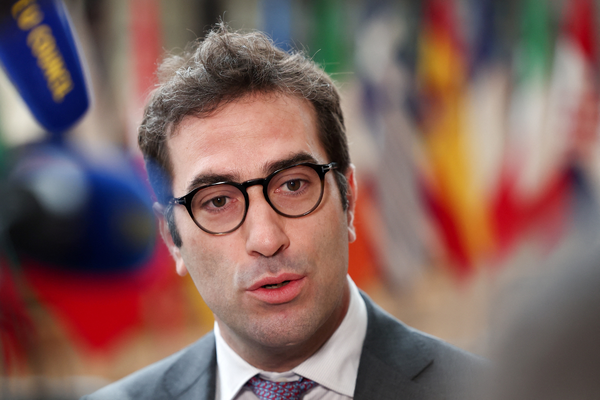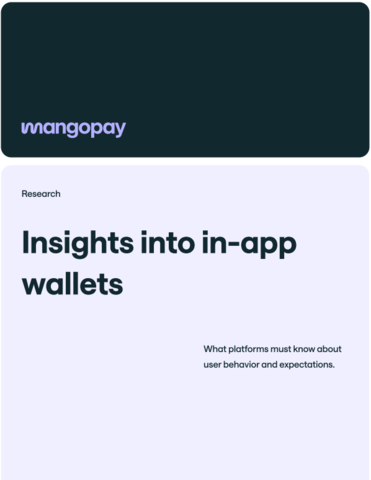The evolution of MoneyGram: a digital transformation success story
Sponsored by MoneyGram
If you were asked what the world’s most innovative and disruptive companies are today, how would you answer? Maybe some of the world’s leading Silicon Valley tech companies?
One extraordinary example is a company that’s been in operation for decades, yet has reinvented itself over the years, evolved to meet ever-changing consumer demand, and proved its resilience through various macroeconomic environments and challenges. MoneyGram, a global leader in cross-border money transfers, has built and scaled its fast-growing digital payments business over the past few years, and is now pushing the limits of what’s possible within the payments and broader fintech industry. But let’s start from the beginning.
MoneyGram is in the business of remittances. Remittances – mostly cross-border payments – serve as a lifeline for millions of families around the world, and are an increasingly vital component of the global economy. With some estimates reporting that one in seven people worldwide are migrants, the remittance industry represents the largest source of foreign income for many developing economies. The World Bank reports remittance flows to low- and middle-income countries are forecasted to reach $630 billion in 2022, up 4.2 per cent from 2021.
Historically, migrants have sent money home by going into a retail location with cash to pay for an amount to be transferred to family and friends, who receive the money at another location in cities around the world. For more than 80 years, MoneyGram has facilitated such remittances through one of the largest and strongest global retail networks in the world, with more than 430,000 retail locations worldwide – nearly four times as many locations as Starbucks, McDonalds and Subway combined! Back in 2011, 98 per cent of all MoneyGram transactions were done in this way.
Fast-forward to today: 44 per cent of all MoneyGram transactions are now digital, facilitated through a smartphone or desktop instead of going a retail location. This is in line with the trajectories of other companies undergoing successful digital transformations. Nike, for example, has reported that retail sales accounted for 84 per cent of its business in 2011, with digital sales accounting for 42 per cent.
Half of MoneyGram’s business is on track to be conducted digitally by 2024, an incredibly rapid transformation of the business. So how did MoneyGram manage to reinvent itself so swiftly while remaining an industry leader? And more importantly, how can others learn from MoneyGram’s success? Let’s break it down:
MoneyGram wasn’t afraid to proactively disrupt itself
The Covid-19 pandemic might have been the real catalyst for many companies’ digital transformation, but not MoneyGram. By June 2020, MoneyGram had already built a direct-to-consumer digital channel with an immersive experience that rivals many traditional e-commerce brands. The company also proactively overhauled its supporting IT infrastructure, modernised its APIs and streamlined its operating model to support the growth of digital.
There were some concerns about cannibalisation when the company was first considering digital transformation. Some advisors feared the move toward direct-to-consumer service could potentially cannibalise the retail side of MoneyGram’s business. However, MoneyGram didn’t want to let fear influence its decision – the company was wary of following a similar path to Kodak, which invented the first digital camera then sat on it for fear of cannibalising its film business. Knowing that consumer technology would change the business at some point, MoneyGram became an early adopter and ultimately took the plunge to disrupt itself (spoiler alert: in the end, the company saw very little cannibalisation between its retail and online businesses, as they each attract different customers with different preferences).
This bold and proactive work paid off as MoneyGram’s digital-first strategy and focus on expanding direct-to-consumer offerings met a tidal wave of online consumer demand, making the company’s digital channel the fastest-growing component of the business. Key drivers of this momentum include consumer adoption of the company’s industry-leading app as well as its global digital partnership network, which enables consumers to receive money digitally without having to leave their home.
When MoneyGram launched its direct-to-consumer channel, it revitalised its strategy and culture for a greater focus on the customer. Many companies are blinded by shiny innovation that ultimately doesn’t benefit the end-customer. While innovation is a key component of MoneyGram’s overall strategy, part of its strategy is to understand the different lifestyles and needs of consumers worldwide. For example, although approximately 80 per cent of MoneyGram transfers to India are now received digitally, this is in stark contrast to MoneyGram transfers to Mexico, where nearly 95 per cent of funds are still picked up in person despite complete digital options being available.
Many of the money transfers MoneyGram facilitates are picked up within 24 hours in cash, and a large portion of that money is spent within 24 to 48 hours on necessities such as food, housing, healthcare and emergencies, according to a recent customer survey. The company’s global retail network continues to provide immense benefits to consumers around the world who rely on cash to support the urgent needs of their families. And, while MoneyGram is all-in on digital, it still recognises the importance of maintaining a healthy global cash network that enables customers to receive funds in the way that’s best for them.
In the end, demand for each of these services is a market-specific story, and consumers should be able to choose the option that best meets their unique needs. It’s the companies that provide flexible options that will be best positioned to meet consumer demand.
MoneyGram’s digital transformation has not only benefited consumers with its convenience. It has also proved a more economical method for sending money to loved ones. Digital transformation has helped bring down the average cost to consumers to roughly 2.9 per cent of funds transferred – significantly lower than the 6.09 per cent industry average reported by the World Bank in March 2022, and already well ahead of the UN Sustainable Development Goal (SDG) to reduce transaction costs of remittances to less than 3 per cent by 2030.
New kid on the blockchain
Given all the disruption in the global economy, it’s important to remember that companies that succeed over the long term will be those that continually innovate, test and develop solutions to solve emerging needs. And MoneyGram has not taken its foot off the gas, but is actively looking for ways to disrupt itself again, this time through technology such as blockchain.
Blockchain has already changed how money moves around the world. Digital currencies have challenged the way we view money itself. Many predicted that these technologies pose a threat to MoneyGram’s business model, but instead of worrying about change MoneyGram has decided to play a leading part in that change. In fact, MoneyGram was the first company to use blockchain technology at scale for cross-border payments.
As the space continues to mature, MoneyGram has taken another step to build a bridge between digital currencies and local fiat currencies through its first-of-a-kind partnership with the Stellar Development Foundation (SDF), one of the world’s largest open blockchain networks for storing and moving money. Currently, more than two billion people worldwide depend on cash for their livelihoods without easy access to the digital economy. This solution connects the cash and crypto economies through a global on/off-ramp service for digital wallets, which will help drive financial inclusion and further fulfil MoneyGram’s mission to deliver innovative financial solutions that connect the world’s communities.
Once again, instead of viewing disruptive technologies as a threat, MoneyGram has viewed them as additive to its strategy. The company welcomes the opportunity to leverage its expertise in cross-border payments, blockchain and compliance to help solve challenges within the existing financial system. This eagerness for innovation has been (and will continue to be) key to its digital transformation success story.
So, what’s next for MoneyGram?
MoneyGram recently entered into an agreement to be acquired by Madison Dearborn Partners (MDP), a leading private equity firm with an impressive track record of supporting companies and accelerating their strategies. The company is anticipating this move will provide even greater opportunities to innovate and transform, lead the industry in cross-border payment technology and deliver a more expansive set of digital offerings, while leveraging its global platform for new customers and use cases.
One thing’s for sure: MoneyGram is committed to constantly reinventing itself and reimagining its products and services, and to always strive to uncover the most innovative ways to best meet consumer needs. It’ll be fun to watch the continued evolution!
For more information please visit www.moneygram.com

Business Reporter Team
Most Viewed
Winston House, 3rd Floor, Units 306-309, 2-4 Dollis Park, London, N3 1HF
23-29 Hendon Lane, London, N3 1RT
020 8349 4363
© 2025, Lyonsdown Limited. Business Reporter® is a registered trademark of Lyonsdown Ltd. VAT registration number: 830519543





